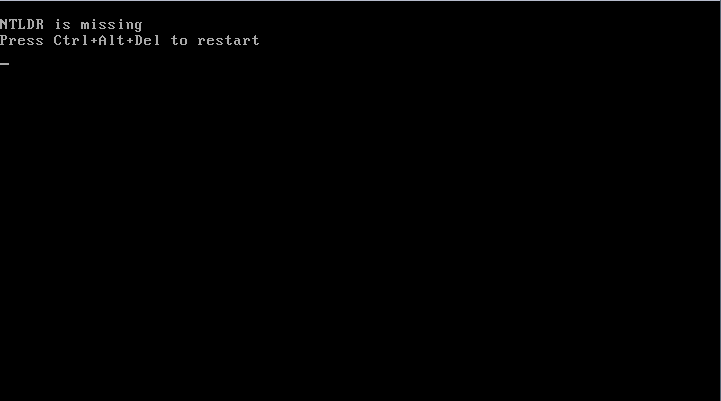Fix the NTLDR is Missing Error in Windows XP
If you receive the message in Windows XP:

There are a few reasons this may occur, but the following are the two most common:
Replace NTLDR and NTDETECT.COM
If you receive the message in Windows XP:
NTLDR is missing
Press Ctrl+Alt+Del to restart

There are a few reasons this may occur, but the following are the two most common:
- Your boot configuration is damaged. First, Manually Fix the Boot Configuration to see if it fixes your problem.
- NTLDR or NTDETECT.COM is damaged/corrupted or missing from the system. Use the steps that follow if manually fixing the boot configuration failed to fix the problem.
Replace NTLDR and NTDETECT.COM
- This tutorial will provide instructions for using the Windows XP Recovery Console to fix the problem with NTLDR or NTDETECT.COM. To reach the Recovery Console for Windows XP, you will need your Windows XP installation media.
- Before you can use the installation media, configure your BIOS for the proper boot order. The installation media should be the first option in the boot menu, i.e. your CD/DVD drive or USB drive.
- Refer to your system manual for steps to enter the BIOS and change boot order settings. Most system manuals can be found online through the system manufacturer (Dell, HP, etc.) or motherboard manufacturer (Gigabyte, ASUS, etc.).
- If you cannot find your installation media, please contact your system manufacturer (Dell, HP, etc.) to replace missing recovery discs or contact Microsoft to replace a missing retail copy. If you were not provided with installation media, you may need to purchase a retail copy from an online or local store if they carry Windows XP.
- Before you can use the installation media, configure your BIOS for the proper boot order. The installation media should be the first option in the boot menu, i.e. your CD/DVD drive or USB drive.
- When prompted, Press any key to boot from CD...
- If you do not see this message or it goes by too quickly, restart your system and try again.
- Once the installation media boots, you will see the following screen. In the lower left corner the message Setup is starting Windows will be replaced with a message that Setup is loading files (file name)... which includes the name of the file setup is loading at that instant. This is an important step for verifying that the installation media is working as it should. If there are no problems with the media, the next screen you see will be the screen in step 4.

- Press R to start the Recovery Console.

- Choose your Windows Installation and enter your Administrator password.

- Determine which drive contains the Windows XP installation media. You will need to use the dir command to manually search each possible drive letter for the I386 directory:
Code:dir d: dir e: dir f:
In the example below, the I386 directory was found in e:I386

- Once you locate I386, copy the NTLDR file from it into the C: drive.

If asked if you would like to overwrite the current file, type
Code:Overwrite NTLDR? (Yes/No/All): y
InfoEven if your Windows drive is not C:, you still want to copy NTLDR to the C: drive. The C: drive is always the boot drive. If you have a different drive letter for your Windows installation, that means you have a partition marked active other than the drive that XP is installed on. NTLDR needs to be on the active C: partition shown through the Recovery Console. For example, your Windows installation may be found on the D: drive as in the following example.
Code:D:\WINDOWS>copy E:\I386\NTLDR C:\NTLDR 1 file(s) copied.
- Copy NTDETECT.COM from I386\NTDETECT.COM to C:\NTDETECT.COM and also grant the overwrite if asked.
Code:copy E:\I386\NTDETECT.COM C:\NTDETECT.COM

If asked if you would like to overwrite the current file, type the following into the command prompt followed by Enter.
Code:Overwrite NTDETECT.COM? (Yes/No/All): y
- Once you are finished with replacing the files, you may exit the Recovery Console with the following command:
Code:exit
Last edited by a moderator:
